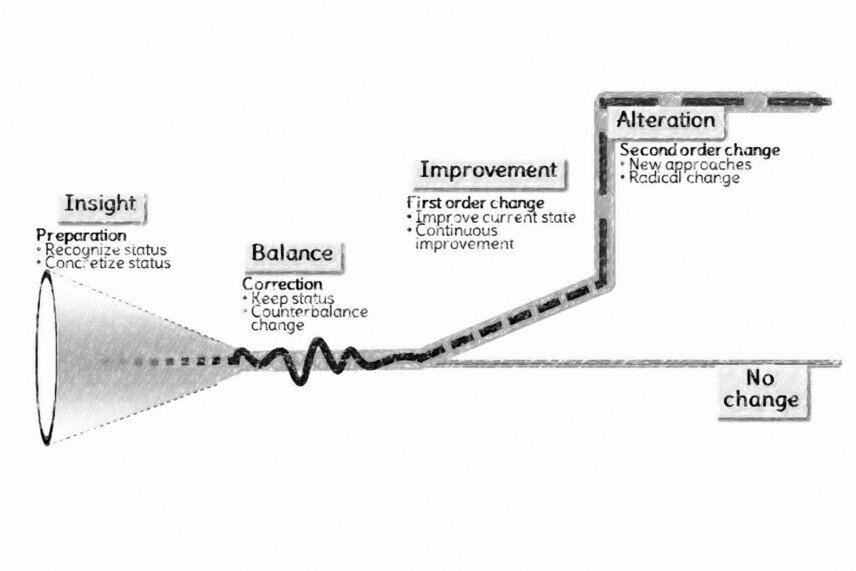Change dynamics
Change
dynamics describe the types of change that arise during a particular time. The
absolute size of the change is perceived differently by everybody. Therefore, in
change dynamics, the emphasis is lying on gradual differences. The four ideal dynamic ranges go from the determination of the baseline,
over maintaining the current condition, continuous improvement, up to the
radical change. Conscious handling of change dynamics facilitates
change management (e.g., Kaizen, Business Process Reengineering) and systems
engineering (e.g., networked thinking, complexity management) to identify the
degree of change for all participants to derive effective procedures.
Change dynamics is divided into four stages: insight, balance, improvement,
and alteration.

- Insight
In the first stage, the insight, the current condition is made aware and described. Thus, it defines the basis for further action, stabilization, or change. The description of the starting point creates the foundation, the baseline, for all change activities.
- Balance
In the second stage, the balance, the current condition is preserved, as changes are suppressed by purposeful correction. This requires the decision to maintain the determined baseline. In case of deviations, then it will be readjusted. An example is a thermostat that keeps the desired room temperature.
- Improvement
In the third stage, the improvement or the first-order change, the first small changes occur. These can lead to continuous improvements over a long period to massive changes that can be positive or negative. The basic conditions and functions are mostly maintained. Improvements result from the avoidance of problems and the optimization of existing practice. An example is the maintenance of airplanes and software programs.
- Alteration
In the last stage of change dynamics, the alteration or the change of second-order, radical changes occur, in which activities are eliminated. With this alteration, actions, deliverables, or organizations are omitted. This means that they are no longer done or sometimes replaced by alternative, innovative solutions. With this, alteration leads to the dissolution of existing systems, in which all related parts disappear entirely or will be used for new systems. An example is the change in mobility, from the horse stable to the gas station.
You should only initiate changes if you are aware of the current status because this greatly influences the measures and the acceptance of those involved.

